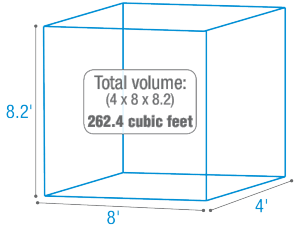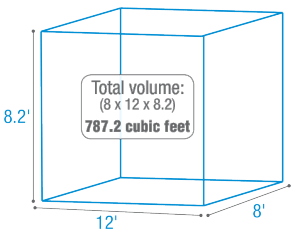
Introduction
When growing indoors, environment is everything! A successful grower needs to take practical steps to manage factors such as light levels, temperature, relative humidity and CO2 levels. Here we introduce the role of extractor fans and environmental controllers used by indoor gardeners to maintain the ideal indoor environment for their plants.
Choosing the Right Extractor Fan
Why not just go BIG?
Some growers believe the maxim ‘bigger is better’ naturally applies to extraction fans but this is not necessarily the case. Yes, extracting air from your grow room means you’re removing hot air, but you’re also removing humidity at the same time. This means that an over-sized extractor fan can sometimes cause low relative humidity. This, in turn, creates a host of negative effects that will lead to poor plant growth.
Increasing the size of your extraction fans is not always the way to combat heat problems in your grow room. This is especially true in the summer months. (If the air you’re pulling into your garden is already warm then your room will stay warm.) If you can’t keep the heat down and you’re changing the air in your garden more than three times each minute, you need to consider installing air conditioning or using air-cooled grow lights. (See Pro Tools box, right.)
Maximizing Efficiency
Growers use ducting to channel the air moved by their extraction fans. Insure that all ducting is securely fastened to extraction equipment. The smallest leak (especially those near the extraction fan) can severely reduce efficiency.
It’s also important to plan the “route” from your extraction fan to the outside world / venting area. The shorter and straighter the better. Any bends in your ducting cost you more efficiency reductions. For example, a 30° bend in ducting cuts the amount of air flow by 20%. A 90° bend constricts air flow by as much as 60%!
Oscillating fans (i.e. fans that just circulate the air within the active growing area rather than extract) help to insure that air quality is even throughout your grow room.
Passive vs. Active
When you remove air from your growing area you create “negative pressure.” In other words, you create a “pulling” effect which brings fresh air into your indoor garden to replace the air that’s being extracted. Some growers simply rely on vents and allow fresh air to be passively pulled in through the equalization of air pressure. Other growers use a smaller, secondary fan to actively blow fresh air into the growing space. Smaller input fans are preferred by indoor gardeners as this maintains a slight negative pressure in the growing area which makes your growing environment easier to manage as a whole.
Choosing the Right Fan
Calculating your Fan Requirements
Growers use extractor fans to keep the air fresh (and CO2 levels rich) in their grow rooms. Extractor fans come in different shapes and sizes. They are rated in terms of the amount of air they can move in a given time period. In North America extractor fans are rated in cubic feet per minute (CFM).
So Which Size Fan Do I Need?
There are many ways to work out which size extractor fan is needed for your grow room. Some rules of thumb are a little too basic, whereas others can be overly complicated. The following method is very popular and straightforward and has served many growers well. We start with this general formula:
Minimum Fan Size Required (in CFM)
=
Volume of Active Growing Area (ft) x 1.25
Calculating the Active Growing Area
The volume of the active growing area is the space taken up by the lights and plants, not the whole room. To work out this volume simply multiply the length x width x height of the active growing area. Let’s take an example:

For the majority of indoor gardens without AC or supplementary CO2, a common goal is to exchange all the air inside your grow room once per minute. However, it’s wise to add 25% to allow for a drop in the extractor fan’s efficiency if using a carbon filter. This figure is not fixed; it depends on the make and age of the filter and the length and course of ducting between the fan and filter and many more interesting factors.
If we run this equation through our example above our required CFM is 328:

Other Things To Consider
This final figure is the minimum size extractor you will need. If your garden is in a very well insulated location (such as a basement) using this figure should be fine. If your garden is located in a sun-exposed location such as a south-facing upstairs bedroom or an attic then the extractor size may need to be increased again by 25%. Of course, you will have to match your required extractor size to the nearest size available. In the previous example overleaf the nearest widely available inline fan size is a 6” (150mm) 390 CFM extractor.

Here’s another example with an active growing area three times larger:

In this indoor garden the nearest widely available fan size available is a 12” (315mm) 1000 CFM extractor.

